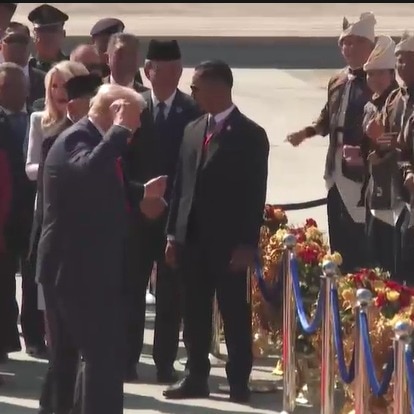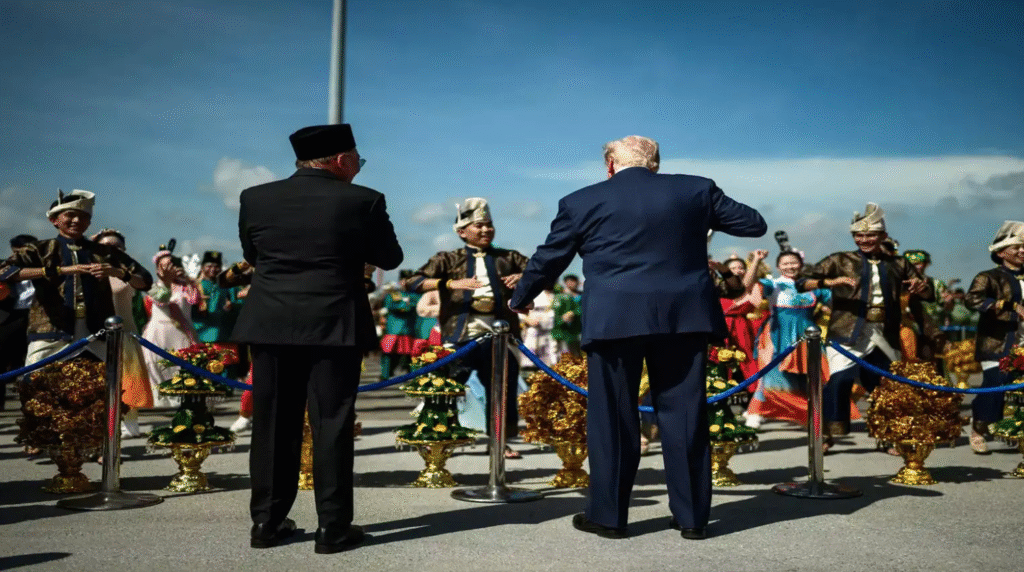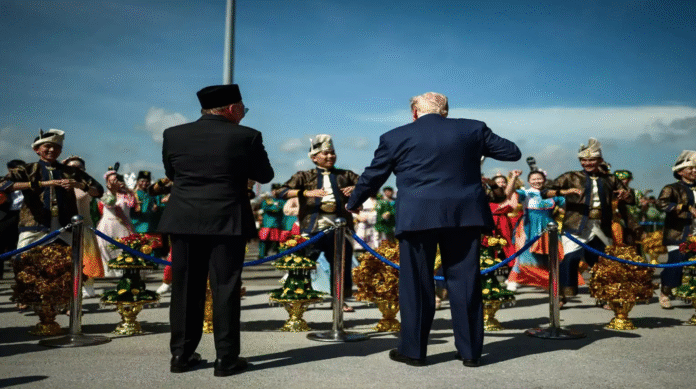In a remarkable diplomatic moment, Trump Malaysia peace deal talks captured global attention as U.S. President Donald Trump took center stage during a symbolic signing ceremony in Kuala Lumpur. The event marked what was described as a “peace deal” between Thailand and Cambodia, two Southeast Asian neighbors long entangled in a border dispute that has fueled decades of tension and sporadic conflict.
Trump’s appearance, coupled with an unusual moment of dance and celebration among world leaders, gave the summit an unexpected mix of politics and spectacle. But behind the smiles and handshakes, the true meaning of the agreement raised questions about its authenticity and long-term impact on regional peace.

The Significance of the Trump Malaysia Peace Deal
The Trump Malaysia peace deal was presented as a diplomatic breakthrough designed to end border hostilities between Thailand and Cambodia. The region’s border dispute has claimed numerous lives over the years and remained a thorn in Southeast Asia’s stability.
At the ceremony, Trump praised both countries for “choosing dialogue over conflict,” describing the event as “a moment of hope for Asia.” The leaders of both Thailand and Cambodia expressed cautious optimism, though the tone of their remarks hinted at deeper complexities.
Thailand’s foreign minister, when asked by BBC reporters about the deal, clarified that it was “a pathway to peace” rather than a formal peace agreement, signaling that the document was more of a diplomatic framework than a binding treaty.
A Pathway, Not a Promise
While the Trump Malaysia peace deal has been celebrated as a diplomatic success, its contents suggest it’s more symbolic than substantial. The agreement sets out a framework for continued dialogue, border demilitarization, and trade cooperation, but it does not establish concrete enforcement mechanisms.
Observers note that both nations have been under U.S. trade pressure in recent months, with Washington linking economic incentives to progress on peace talks. That pressure is believed to have played a major role in bringing the two governments to the negotiating table.
The Ceasefire That Set the Stage
The foundation for the Trump Malaysia peace deal was laid in late July, following intense U.S. diplomatic efforts. Trade-related negotiations led to a ceasefire between Thailand and Cambodia after five days of border clashes that left more than two dozen people dead and many more displaced.
That ceasefire paved the way for a new round of talks, mediated in part by American and Malaysian officials. The Kuala Lumpur event was thus less about ending a war and more about publicly reinforcing the fragile calm that had emerged.
Malaysia’s Role as Host
Malaysia’s involvement in the peace initiative highlights its growing role as a regional mediator. Prime Minister Anwar Ibrahim hosted the ceremony at the Kuala Lumpur Convention Centre, emphasizing Malaysia’s commitment to “peace, prosperity, and unity” across Southeast Asia.
For Malaysia, the Trump Malaysia peace deal was not only a diplomatic achievement but also an opportunity to strengthen its global image as a neutral ground for resolving disputes. The country’s strategic location and diplomatic credibility made it an ideal host for a U.S.-backed peace summit.
Trump’s “Dancing Diplomacy” Moment
In an unexpected twist, the usually formal atmosphere shifted when Trump joined in a brief cultural dance during the closing ceremony, a moment that quickly went viral online. The sight of the U.S. president dancing alongside Southeast Asian leaders sparked a flurry of reactions on social media, with some praising the gesture as a symbol of unity, while others viewed it as political theater.
Regardless of the interpretation, the “Trump dance” became the most talked-about moment of the event, drawing attention even from those uninterested in geopolitics.
The Fine Print of the Peace Path
The Trump Malaysia peace deal outlines several key steps for Thailand and Cambodia:
-
Establishing joint border commissions to review disputed areas.
-
Opening cross-border trade zones under international supervision.
-
Launching community rebuilding initiatives for displaced residents.
-
Committing to biannual peace talks hosted alternately by Malaysia and Singapore.
While these initiatives appear promising, analysts caution that similar frameworks in the past have collapsed due to political instability and nationalistic rhetoric on both sides.
International Reactions
The announcement of the Trump Malaysia peace deal drew mixed reactions from world leaders and regional organizations.
-
The ASEAN Secretariat welcomed the move as “a critical step toward sustained dialogue.”
-
The European Union praised the U.S. for re-engaging diplomatically in Southeast Asia.
-
However, several independent analysts warned that “a paper peace” without enforcement could reignite tensions.
Even within the U.S., some foreign policy experts labeled the deal as “performative diplomacy,” suggesting that Trump’s presence was aimed more at optics than substance.

The Road Ahead for Thailand and Cambodia
Despite skepticism, both nations appear committed to at least maintaining open communication. Officials have already scheduled follow-up meetings in Bangkok and Phnom Penh to discuss implementation strategies.
For citizens along the border, the Trump Malaysia peace deal represents cautious hope. “We’ve seen peace talks come and go,” said a Cambodian farmer near the border town of Poipet. “But maybe this time, it will last.”
If the deal’s framework holds, it could serve as a model for conflict resolution in other ASEAN hotspots, from the South China Sea disputes to internal ethnic conflicts in Myanmar.
Why the Trump Malaysia Peace Deal Matters Globally
At a time when geopolitical tensions are rising worldwide, the Trump Malaysia peace deal serves as a reminder of diplomacy’s enduring power, even when the outcomes are uncertain.
It underscores how symbolic gestures, when backed by sustained dialogue, can help prevent small conflicts from becoming regional crises. For Southeast Asia, the deal may not be the end of border tensions, but it’s a significant step in keeping communication alive.

